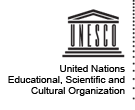Ninety-four journalists were killed in Pakistan over the last decade, yet just one of the killers has been arrested, tried and convicted. Many more journalists have received threats, including from the country’s intelligence agencies. Due to this alarming situation, Pakistan was identified as a focus country for the UN’s Plan of Action on the Safety of Journalists and the Issue of Impunity in 2013-2014.
This project therefore aims to increase the safety of Pakistani journalists working in hostile environments. A safety mechanism will be developed, including a rapid...
